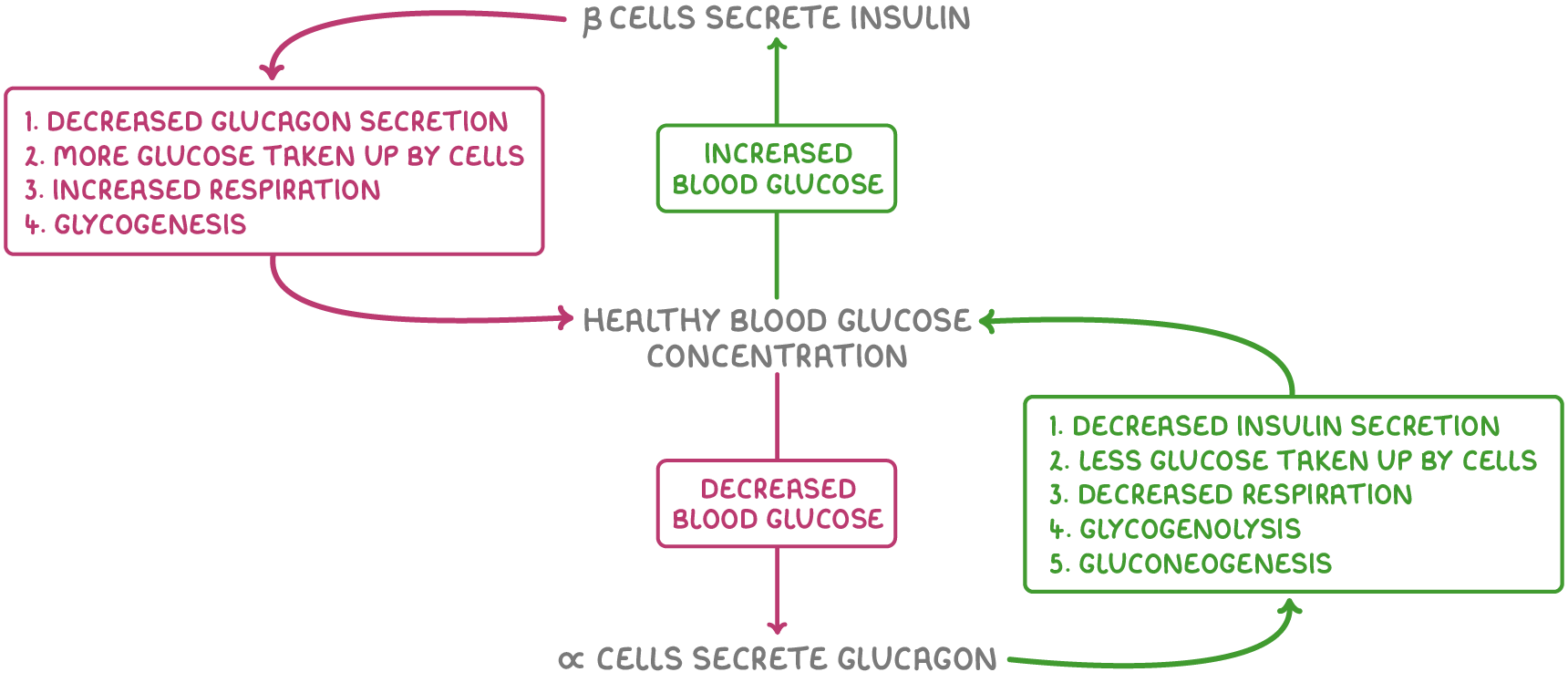Regulation of Blood Glucose Concentration
This lesson covers:
- The role of the pancreas as an endocrine gland
- The regulation of blood glucose levels by insulin and glucagon
The role of the pancreas as an endocrine gland
The pancreas can act as an endocrine gland using special cell clusters called the islets of Langerhans. The cells within the islets secrete different hormones directly into blood vessels.
These islets primarily contain two types of cells:
- Beta (β) cells - They secrete the hormone insulin.
- Alpha (α) cells - They secrete the hormone glucagon.
Both insulin and glucagon are crucial in regulating blood glucose levels.
This is vital because:
- Glucose is essential for cellular respiration.
- Extreme blood glucose levels can lead to osmotic imbalances in cells, potentially causing cell death.
How insulin and glucagon control blood glucose
Insulin and glucagon collaboratively maintain normal blood glucose levels through negative feedback mechanisms.

When glucose levels increase, insulin acts to reduce blood glucose through several mechanisms:
- Inhibition of α cells - Reduces glucagon secretion.
- Increased glucose uptake - Insulin increases the permeability of muscle and fat cells to glucose.
- Increased respiration - Increased glucose breakdown for energy production.
- Glycogenesis - Glucose is converted into glycogen for storage, primarily in the liver.
When glucose levels decrease, glucagon acts to increase blood glucose through several mechanisms:
- Inhibition of β cells - Lowers insulin secretion.
- Reduced respiration - Decreases glucose breakdown.
- Glycogenolysis - Glycogen is converted back into glucose in liver and muscle cells.
- Gluconeogenesis - Glucose is produced from amino acids and fats in the liver.
Adrenaline also works with glucagon to increase blood glucose levels when they are too low by promoting glycogenolysis and gluconeogenesis in liver and muscle cells.